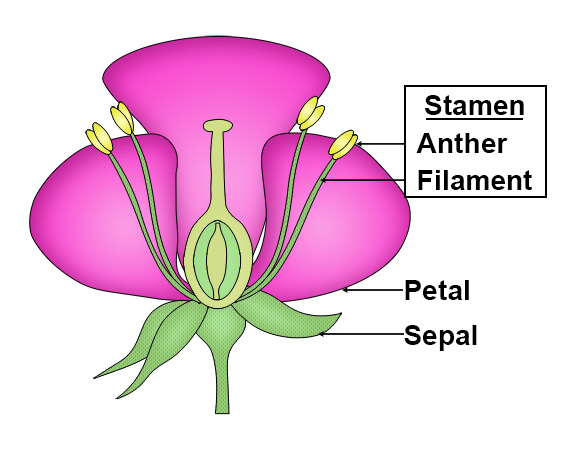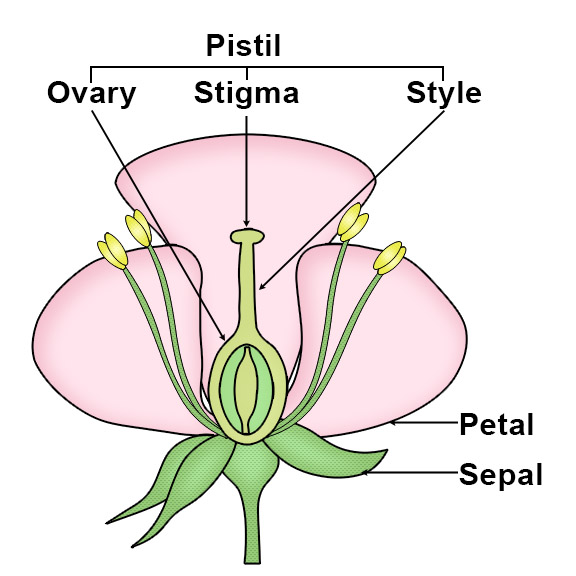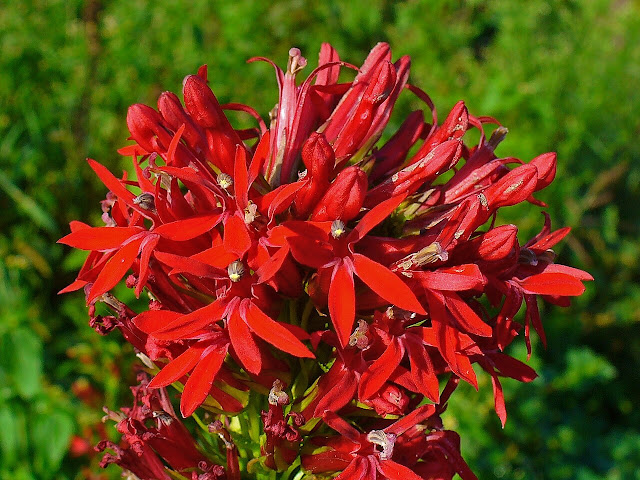An American Persimmon is not like the Asian Persimmons that originated in China that you see in the local grocery store. Asian persimmons are much larger than American persimmons, which are about the size of a ping-pong ball. These deeply orange-colored berries were highly prized by many Native American communities as well as European settlers. The name Persimmon comes from putchamin, a rendering of the name used by the Algonquins.
_20-10-08_022.jpg) |
| photo Chris Light |
Diospyros virginiana can be found from Connecticut to Florida and west to Texas and states in the Midwest. The Latin name, Diospyros means divine fruit in Greek. This tree, which is in the ebony family and has a shrub-like appearance can grow up to sixty feet tall and its bark is grey-brown and scaley. The leaves of the tree are oval and about six inches in length. From May through June, the tree produces creamy white tube-shaped flowers that are male and urn-shaped female flowers that change into orange-colored fruit in the fall. The flowers are pollinated by insects. American Persimmon trees are dioecious, meaning that the tree produces either male or female flowers, both species of trees are needed for pollination. The most common way this tree spreads is by seeds that are dispersed by animals that eat their fruit.
 |
| photo Eric Toensmeier |
One of the most common traditional uses of this tree is as an antidiarrheal and to treat gastrointestinal problems and indigestion. A tea was made from the roots to treat dysentery. A tea made from the seeds of the fruit was used to treat kidney stones. It has also been used to treat sores in the mouth and throat. as a wash for piles and as a toothache remedy. Specifically, the Cherokee chewed the bark to treat heartburn and made an infusion of the bark to treat the liver. They also made a compound infusion and used this to treat toothaches. The Rappahannock made an infusion of the bark and drank it as a tea to treat thrush, sore throats, colds, and fevers.
Many Native American communities ate the fruit and used it to make puddings, bread, jams, jellies, and beverages. Some communities fermented the fruit to make brandy. The Rappahannock rolled the fruit in cornmeal, brewed it in water, and baked it. This mixture was then mixed once again with hot water to make beer.
 |
| Eric Toensmeier |
It is tricky to figure out when American persimmons are ripe. Persimmons that are not ripe taste bitter because of the tannins present in the fruit. When they ripen, they are very sweet and have a flavor reminiscent of caramel. They are ripe when they are mushy, and that is usually after a frost. This fruit usually ripens around Thanksgiving.
An American Persimmon tree can live up to 100 plus years as opposed to an Asian Persimmon tree has a lifespan of 30 to 70 years.
During the Civil War, the seeds of the American Persimmon tree were boiled or roasted and ground and used as a substitute for coffee.
The American Persimmon tree is in the ebony family and the wood from the tree has been used to make golf clubs and furniture.
Persimmon seeds are thought to be able to predict the upcoming winter. If the cut kernel is spoon-shaped, the winter will have wet heavy snow, if it is fork-shaped, winter will have light powdery snow and if it is knife-shaped, the winter will be icey and cold.
Other names for the American Persimmon are common persimmon, eastern persimmon, pssumwood, possum apples and sugar plums.
.JPG)



.jpg)







_(north_of_Bootlegger_Canyon,_west_of_Moab,_Utah,_USA)_1.jpg)
_(north_of_Bootlegger_Canyon,_west_of_Moab,_Utah,_USA)_4.jpg)

-1.jpg)

_1711.JPG)
